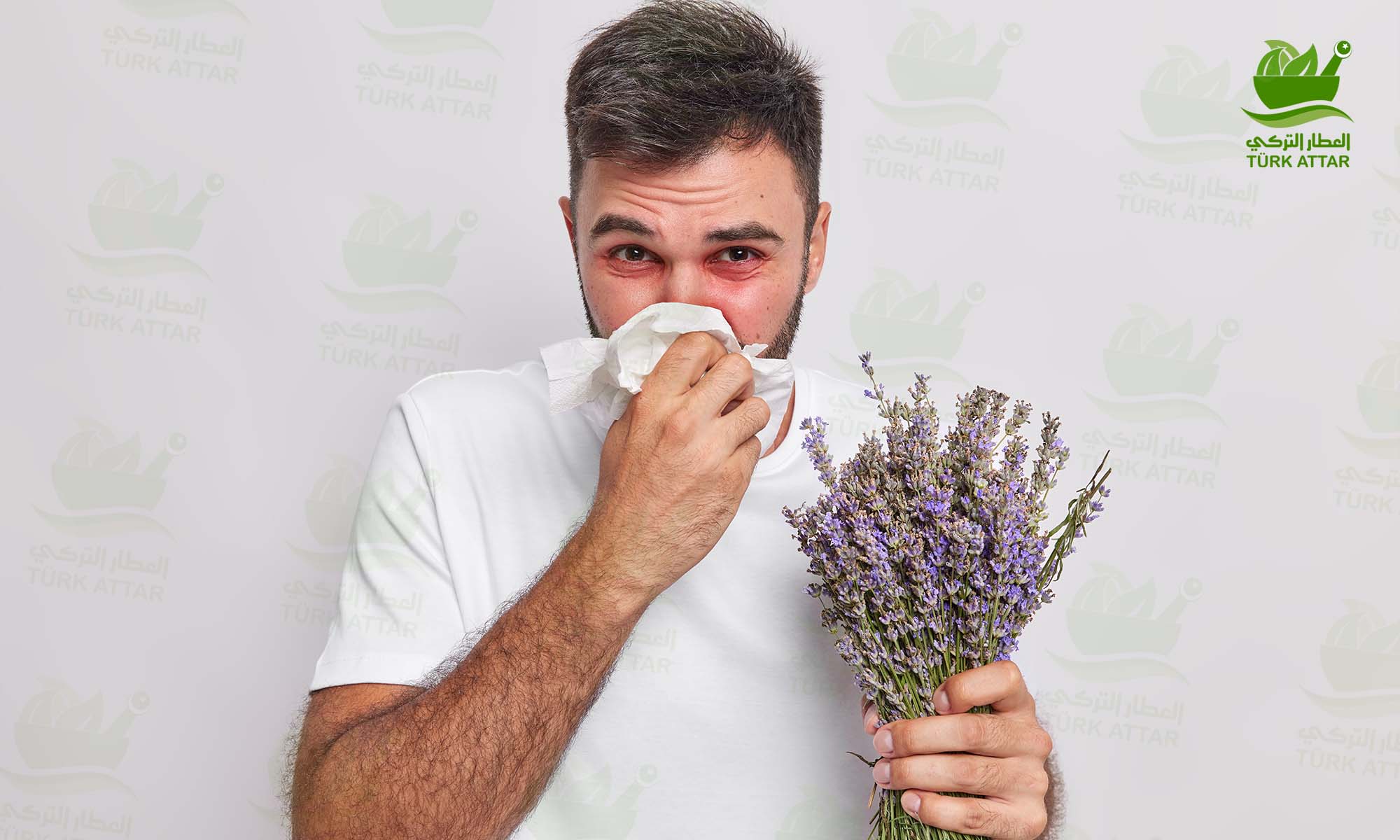
مع افتتاح فصل الربيع، قد تجعلك الحساسية الموسمية غير سعيد.
تتميز حمى القش، المعروفة أيضًا باسم التهاب الأنف التحسسي، بإفرازات الأنف واحتقانها، وحكة في العين ودموعها، ونوبات العطس، وأعراض ضغط الجيوب الأنفية. على الرغم من اعتبار الأعراض مع الاشتباه في الإصابة بنزلة برد، إلا أن حمى القش لا تنتج عن فيروس، على عكس نزلات البرد.
حمى القش
تنجم حمى القش عن ردود فعل الجسم التحسسية لمسببات الحساسية مثل حبوب اللقاح وعث الغبار وشعر القطط والقشرة. إذا استمرت الأعراض بغض النظر عن الموسم، فقد تكون مصابًا بالتهاب الأنف التحسسي طويل الأمد. قد يكون لديك حتى حساسية من أشياء مثل الدخان في الهواء ورائحة العطور وعادم السيارة. يمكن أن تؤثر حمى القش على أدائك في المدرسة والعمل وتحد من جودة حياتك.
ما هي حمى القش؟
الحساسية هي نوع من الأمراض نشهده كثيرًا. العوامل البيئية والاستعداد الجيني فعالان في ظهور المرض. تسبب مسببات الحساسية مثل حبوب اللقاح وشعر الحيوانات والعفن ردود فعل في الجسم مثل الحكة والاحمرار والتورم والتشنج وإفرازات العين وإفرازات الأنف ونوبات العطس.
يمكن أن تحدث الحساسية أحيانًا في الجسم كله، وأحيانًا في جزء واحد فقط من الجسم. تسمى الحساسية التهاب الملتحمة التحسسي إذا حدثت في العين، والربو إذا كانت موجودة في الرئتين، أو الشرى، أو الأكزيما، أو التهاب الجلد التماسي إذا حدث على الجلد، وحمى القش أو التهاب الأنف التحسسي إذا حدث في الجهاز التنفسي العلوي.
من الذي يصاب بحمى القش في كثير من الأحيان؟
يمكن رؤية حمى القش في أي عمر، وهي أكثر شيوعًا بين المرضى الذين تتراوح أعمارهم بين 18 و25 عامًا. لا يمكن إنكار أهمية الاستعداد الوراثي للإصابة بحمى القش. ما يقرب من 50 ٪ منهم لديهم حالات إيجابية من الأسرة.
الأسباب
ما الذي يسبب حمى القش؟
في الأشخاص المصابين بالتهاب الأنف التحسسي (حمى القش)، يعتبر نظام الدفاع في الجسم أن المادة غير الضارة الموجودة في الهواء ضارة وتنتج أجسامًا مضادة ضدها. في المرة التالية التي تتلامس فيها مع هذه المادة التي يُفترض أنها ضارة، ترسل الأجسام المضادة إشارة إلى جهاز المناعة لديك لإطلاق مواد كيميائية معينة، مما يؤدي إلى ظهور أعراض حمى القش.
ما هي عوامل خطر حمى القش؟
عوامل الخطر التي يمكن أن تسبب حمى القش يمكن سردها على النحو التالي:
وجود تاريخ عائلي من الحساسية والربو والتهاب الجلد التأتبي،
العيش في بيئة يتواجد فيها شعر الحيوانات وعث الغبار،
التدخين في المنزل، والتعرض لأم كانت تدخن في سن الطفولة،
التعرض لتلوث الهواء،
الطفل الأول في الأسرة.
ما هي مضاعفات حمى القش؟
تدني جودة الحياة: يمكن أن تمنعك حمى القش من الاستمتاع بالأنشطة التي تقوم بها والتدخل في إنتاجيتك.
مشاكل النوم ذات النوعية الرديئة: لها تأثيرات تجعل من الصعب عليك النوم، مما يؤدي إلى استمرار التعب أثناء النهار.
تفاقم أعراض الربو: يمكن أن تؤدي حمى القش إلى تفاقم أعراض الربو.
التهاب الجيوب الأنفية: يمكن أن تسبب مشاكل مثل احتقان الجيوب الأنفية والعدوى والتهاب الغشاء المحيط بالجيوب الأنفية التهاب الجيوب الأنفية.
عدوى الأذن: يمكن أن تسبب التهاب الأذن الوسطى.
لا توجد طريقة لتجنب حمى القش، أفضل شيء يمكنك القيام به هو تقليل تعرضك لمسببات الحساسية التي تسبب لك الأعراض.
الأعراض
ما هي أعراض حمى القش؟
أعراض حمى القش. سيلان الأنف واحتقانه، دموع العين، حكة، نوبات عطس، نوبات سعال، تنقيط من الأنف، ضعف، انتفاخ تحت العينين، حكة في الحلق والحنجرة. قد تبدأ أعراض التهاب الأنف التحسسي أو تتفاقم في أوقات معينة من العام. من بين العوامل التي تؤدي إلى ذلك؛ حبوب اللقاح المختلفة التي تظهر في الربيع والخريف، وعث الغبار ووبر الحيوانات من الحيوانات الأليفة والفطريات والعفن.
طرق التشخيص
ما هي طرق تشخيص حمى القش؟
بعد الاستماع إلى تاريخك البدني والطبي، قد يطلب منك طبيبك إجراء اختبارات الجلد والدم.
اختبار الجلد: يتم ملاحظة فيما إذا كان لديك رد فعل تحسسي بعد فرك كميات صغيرة من مسببات الحساسية التي يمكن أن تؤدي إلى الحساسية على ذراعك وأعلى ظهرك. إذا كنت تعاني من حساسية، فستظهر بثور في المنطقة التي يتلامس فيها المواد المسببة للحساسية.
فحص الدم: يتم إرسال عينة دم إلى المختبر لقياس استجابة جهازك المناعي لبعض مسببات الحساسية، ويقيس الاختبار عدد الأجسام المضادة المسببة للحساسية.
الحد من تعرضك لمسببات الحساسية!
لا يمكن تجنب المواد المسببة للحساسية تمامًا، ولكن يمكنك تقليل الأعراض عن طريق الحد من تعرضك لها. والأهم من ذلك، إذا كنت على دراية بما لديك من حساسية تجاهه، فيمكنك تجنب المحفزات.
إذا كان لديك حساسية من حبوب اللقاح أو العفن.
حافظ على الأبواب والنوافذ مغلقة قدر الإمكان خلال فصلي الربيع والخريف عندما يكون حبوب اللقاح أكثر نشاطًا.
لا تعلق الغسيل في مكان تلامس فيه حبوب اللقاح. لأن حبوب اللقاح يمكن أن تلتصق بالألبسة والمناشف.
يفضل استخدام التكييف في منزلك وسيارتك. وفي مكيفات الهواء، انتبه جيدًا لاستخدام المرشحات المقاومة للحساسية والاستبدال المنتظم للفلاتر. بهذه الطريقة، يمكن منع الغبار الذي قد يأتي من الخارج.
يفضل البقاء في المنزل في الأيام الجافة وأثناء الرياح.
استخدم دائمًا قناع الغبار عند تنظيف منزلك والحديقة.
يجب أن تكون النباتات والزهور في حدها الأدنى في بيئتك لأنها يمكن أن تؤوي العفن.
إذا كان لديك حساسية من عث الغبار.
اختر منتجات مقاومة للحساسية لبطانيات الأسرة الخاصة بك.
اغسل البطانيات في ماء ساخن حتى 60 درجة على الأقل.
قم بتشغيل الشفاطات أثناء الطهي، ولا تجفف الملابس المغسولة بالداخل.
إذا كان لديك حساسية من شعر الحيوانات.
تجنب الاحتفاظ بالحيوانات الأليفة في منزلك.
أبقِ حيواناتك الأليفة بعيدًا عن غرفة نومك وأثاثك.

11 التعليقات
1
1
1
1
1
1
1
1
1
1
1
1
1
1
1
1
1
1
1
1
1
1
1
1
1
1
1
1
1
1
1
1
1
1
1
1
1
1
اترك تعليقًا